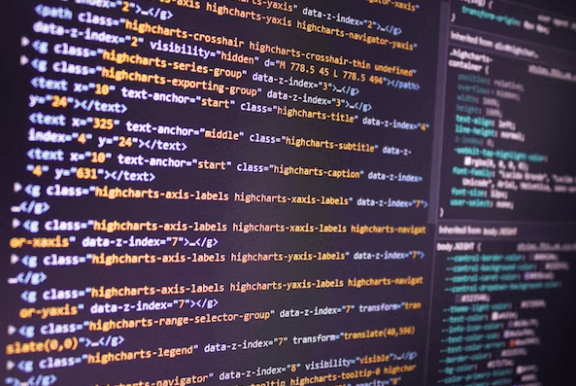
Structured and unstructured data can be analyzed using scientific methodologies, algorithms, and systems in Data Science. With the explosive growth of digital information, the importance of Data Science has been emphasized in various sectors, from business and healthcare to government and entertainment. Central to this burgeoning field are the various tools and technologies used by data scientists to sift through massive amounts of data and convert them into actionable insights. This article provides a comprehensive overview of these tools and technologies.
The Data Science Process
Before diving into the specifics of the tools and technologies used in data science, it is essential to understand the general data science process. Typically, it involves several steps, including defining the problem, collecting and cleaning data, exploring and analyzing the data, building models, validating the models, and presenting the results.
In each of these steps, data scientists use different tools and technologies that make the process efficient and the results reliable. It’s worth noting that these tools are not standalone. Instead, they are often used in conjunction, creating an interconnected ecosystem of data science tools and technologies.
Data Collection and Cleaning Tools
Raw data collection is a vital step in the data science process. While the data can come from many sources, such as databases, text files, APIs, web scraping, and more, the tools to gather them vary accordingly.
Databases
Databases are fundamental tools for any data scientist. Relational databases like MySQL, Oracle, and SQL Server are prevalent, using SQL (Structured Query Language) to manage data. NoSQL databases like MongoDB and Cassandra, which handle unstructured data, are also gaining popularity.
Web Scraping
For data collection from the web, tools like Beautiful Soup and Scrapy in Python are often used. These libraries allow data scientists to extract information from web pages efficiently.
The process of cleaning data, also known as data wrangling or data munging, involves dealing with missing values, removing duplicates, and correcting inconsistencies. Libraries like Pandas in Python and Dplyr in R are incredibly effective in these tasks.
Data Exploration and Visualization Tools
Once the data has been collected and cleaned, the next step is to understand the data’s structure, relationships, and patterns. This exploratory data analysis (EDA) phase is where data visualization tools come into play.
Statistical Tools
R, a programming language and software environment for statistical computing, is an excellent tool for EDA. Its suite of packages allows for advanced statistical analysis and data visualization.
Visualization Libraries
On the other hand, Python offers libraries such as Matplotlib and Seaborn for data visualization. More advanced tools like Tableau and Power BI provide interactive platforms for data visualization, enabling users to see patterns, trends, and insights more intuitively.
Data Modelling and Machine Learning Tools
Once a clear understanding of the data is achieved, data scientists use machine learning algorithms to build predictive models. Different tools specialize in various types of models.
Machine Learning Libraries
Scikit-learn is a popular Python library that offers a wide array of machine learning algorithms. For deep learning tasks, TensorFlow and PyTorch are top choices. These libraries allow for the creation and training of complex neural networks.
Big Data Tools
When dealing with large datasets, big data tools like Apache, Hadoop, and Spark become essential. They allow data scientists to process and analyze vast amounts of data across computing clusters.
Communication and Presentation Tools
The final step of the data science process is to communicate the findings effectively. Tools like Jupyter Notebooks and R Markdown are excellent for this purpose, allowing data scientists to combine code, results, and narrative in a single document.
The Interplay of Tools and Technologies in Data Science
The effectiveness of data science heavily relies on the interplay of diverse tools and technologies. Therefore, choosing the right tools can profoundly impact the overall success of any data science project. As the field evolves, new tools and technologies continue to emerge, making it a dynamic and exciting field to explore and learn.
Professional Development in Data Science
Pursuing an MIT Applied Data Science Program can help aspiring data scientists gain comprehensive knowledge and practical experience with these tools. This program equips students with the skills necessary to make informed decisions about the right tools for various data science tasks, ensuring they are well-prepared to meet industry demands.
For those unable to commit to a full-time program, taking a Data Science Course can also provide substantial knowledge about the field. Such courses are designed to provide learners with a solid foundation in data science, offering an understanding of its key concepts, tools, and technologies.
Cloud Computing in Data Science
As datasets grow larger and more complex, the importance of cloud-based tools in data science has become more pronounced. Cloud platforms such as Google Cloud, Amazon Web Services (AWS), and Microsoft Azure offer data scientists access to robust infrastructure without the need for expensive and complex local setups.
These platforms provide a range of services, from data storage and compute power for machine learning models to fully managed databases. They are designed to handle large-scale data processing and analysis, offering scalability, speed, and flexibility. Moreover, their pay-as-you-go model can make sophisticated data analytics more accessible and cost-effective.
The Role of Artificial Intelligence (AI)
In recent years, Artificial Intelligence (AI) has become an integral part of the data science landscape. Tools incorporating AI capabilities can automate many stages of the data science process, from data collection to model building and validation.
AI-driven tools like AutoML platforms aim to automate the process of applying machine learning models to real-world problems. These platforms enable non-experts to create models without requiring an in-depth understanding of the underlying algorithms. As a result, they are democratizing access to data science, allowing more people and organizations to benefit from data-driven insights.
Data Ethics and Privacy Considerations
The surge in data collection and analysis has also underscored the importance of data ethics and privacy. Data scientists have a responsibility to use tools and technologies ethically, ensuring personal data is handled responsibly and transparently. Additionally, they must be mindful of biases in data and algorithms that could lead to unfair outcomes.
Tools and technologies designed to address these issues are becoming increasingly important. For example, differential privacy techniques can be used to analyze and share data without compromising individual privacy. Similarly, bias detection and mitigation tools can help identify and address biases in data and models.
Conclusion: The Future of Data Science Tools and Technologies
In conclusion, exploring the vast landscape of data science tools and technologies is a vital part of becoming a successful data scientist. As data continues to play an increasingly significant role in our world, the demand for skilled data scientists who can effectively leverage these tools will undoubtedly continue to rise.
About the Author
Nisha Nemasing Rathod works as a Technical Content Writer at Great Learning, where she focuses on writing about cutting-edge technologies like Cybersecurity, Software Engineering, Artificial Intelligence, Data Science, and Cloud Computing. She holds a B.Tech Degree in Computer Science and Engineering and is knowledgeable about various programming languages. She is a lifelong learner, eager to explore new technologies and enhance her writing skills.



